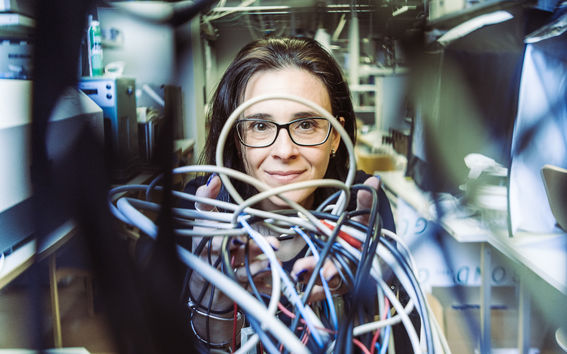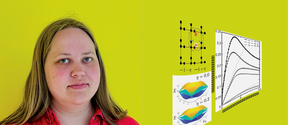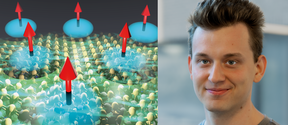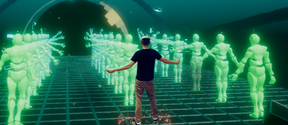Everyday choices: What’s your favourite gadget, Caterina Soldano?

You research organic electronics. What on Earth is that?
Most devices are made with components, which are manufactured from silicon and similar inorganic materials. Instead of silicon, organic electronics exploits organic molecules. One of its key advantages is that it enables the manufacturing of flexible devices, such as smart bracelets and wearable sensors or foldable screens. Today, lots of phones already have screens based on organic light-emitting diodes (OLEDs), organic devices which are energy-efficient and can produce deep colours.
My work here at Aalto involves solving some of the key challenges related to organic electronics through both fundamental research and application-oriented studies.
Can you, as a researcher, get involved in the development of less intrusive devices?
My research partly deals with how we could design less intrusive devices for use in, for example, personal health care. Organic electronics enable us to develop, say, on-skin sensors that adjust to the body’s movements without feeling uncomfortable. These can monitor the wearer’s state of health, reminding users of their presence only when something out of the ordinary is detected.
What’s your favourite gadget?
The smartphone might not be my favourite, but I am nevertheless hooked and don’t know how I’d manage without one. I have tried to limit my daily use, but this has not been very successful so far. Nowadays, smartphones have become multi-function devices that help me in countless daily routines and connects me with other people in numerous ways.
Another important gizmo is my sewing machine. With it, I can tap into my creativity and make new things. I started by making children’s clothes for a friend because they are small and easy to do, but now, with a bit more confidence, I have also started making my own clothes! For me, sewing is a great way to relax and get my mind off the workday. Could I combine my work and hobby, and start developing wearable electronics? You never know!
Do you consider some devices unnecessary or useless?
I don’t think I own any useless gadgets. The utility of a device depends on each individual’s needs. Someone might consider robot vacuum cleaners pointless, but to me, formerly an owner of two cats, not having to personally hoover loose hair every day was a great help indeed. The robot provided an amusing distraction for the cats as well.
I wouldn’t buy a yoghurt maker, e-reader or the latest novelty gizmo pushed by online retailers for myself, but such items can fit someone else’s everyday needs perfectly well.
Do smart devices take up too much of our time?
Not these devices themselves, but the services and content they provide. Think back to when your phone could only be used for calls and texting – how often did you glance at it back then? Today, app developers are constantly thinking of ways to capture your attention and get you to open their app or click on an ad.
I think the issue is how much we allow technology to consume our time. I have myself tried to limit the amount of notifications my devices send in order to keep them from disturbing my focus. This is, however, difficult. There are so many apps that pop out notifications throughout the day.
The Italian Association of Women Inventors and Innovators named you the Woman Innovator of the Year in 2016, in addition to which you have also received a Special Recognition Award from the European International Woman Inventors & Innovators Network. What can be done to encourage more women to enter the field of technology?
We must emphasise that both boys and girls can achieve success in any and every field. Everyone should be given the same opportunities to learn about different topics, experience success and build up their self-confidence. This encourages young people to seek out the field that they are interested in and good at, irrespective of their gender.
This article is published in the Aalto University Magazine issue 26, April 2020.
- Published:
- Updated:
Read more news

"Keep an open mind and step outside of your comfort zone"
Read what double award winner Kukka-Emilia Huhtinen wants to share about her doctoral studies in theoretical physics
"My PhD was great from every single point of view"
Read how Viliam Vaňo, Aalto thesis award winner, experienced his doctoral studies
Get to know us: Assistant Professor Ville Miikkulainen
Miikkulainen most recently worked as University Lecturer at Aalto University.